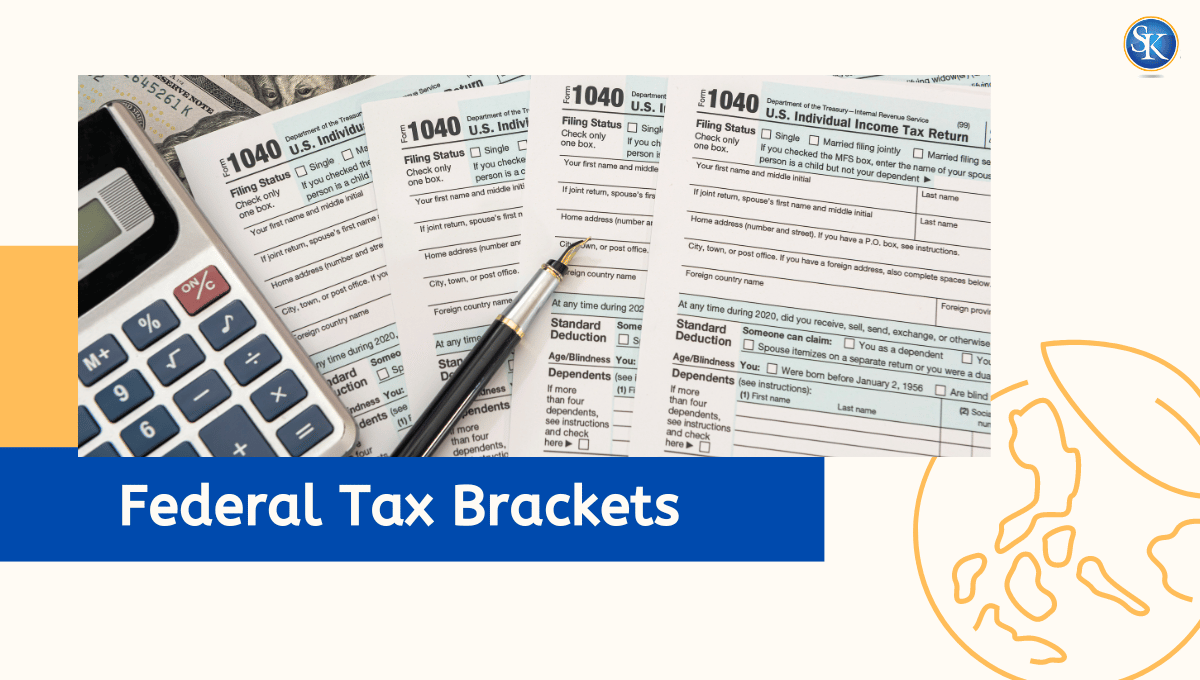
Federal Income tax brackets for tax years 2025-2026
For the 2025 tax year, you will file your return in 2026 using seven federal income tax brackets that range from 10% to 37%. The IRS adjusts these brackets every year to keep up with inflation, so you can earn a little more before moving into the next rate. Knowing your bracket helps you plan smarter, pay less, and stay ready for tax season.
What Are Federal Income Tax Brackets?
Federal income tax brackets divide income into sections that are each taxed at a different rate. This is called a progressive tax system. It means people who earn more pay a higher percentage only on the part of income that falls into a higher range.
Example: If you earn eighty thousand dollars, the first part of your income is taxed at lower rates and only the top portion reaches the higher rate. Your full income is never taxed at one single rate.
Top accounting firms for Startups
How Federal Income Tax Brackets Work
The Internal Revenue Service (IRS) adjusts federal tax brackets each year to account for inflation, which prevents bracket creep, a scenario where people are pushed into higher tax brackets or have reduced value from credits or deductions due to inflation, rather than any actual increase in real income.
Here’s a look at the current federal tax brackets for individuals filing as singles:
Single Filers
|
Rate |
Taxable Income |
|
10% |
Up to $11,600 |
|
12% |
$11,601 – $47,150 |
|
22% |
$47,151 – $100,525 |
|
24% |
$100,526 – $191,950 |
|
32% |
$191,951 – $243,725 |
|
35% |
$243,726 – $609,350 |
|
37% |
Over $609,350 |
Married Filing Jointly
|
Rate |
Taxable Income |
|
10% |
Up to $23,200 |
|
12% |
$23,201 – $94,300 |
|
22% |
$94,301 – $201,050 |
|
24% |
$201,051 – $383,900 |
|
32% |
$383,901 – $487,450 |
|
35% |
$487,451 – $731,200 |
|
37% |
Over $731,200 |
Standard deduction for 2025
-
Single $14,600
-
Married $29,200
-
Head of Household $21,900
These figures are current as published by the IRS in November 2024. The 2026 update will rise slightly once inflation adjustments are released near the end of 2025.
Why Federal Income Tax Brackets Matter in 2025 and 2026
Better Budgeting
Knowing your bracket helps you estimate how much of your income goes to taxes so you can plan bills, savings, and investments without surprises in April 2026.
Smarter Investing
Selling a property or stock can raise your income and move you to a higher bracket. Planning sales in a lower-income year can keep you from paying extra.
Retirement Withdrawals
Money you take from a 401(k) or IRA counts as income. Spreading withdrawals over several years may keep you in a lower bracket and protect your savings.
Practical Ways to Manage Your Tax Bracket
Time Your Income
Freelancers and business owners can move invoices or bonuses into the next year if they expect to earn less later, helping them stay below a higher bracket.
Use All Legal Deductions
Common deductions include:
- Mortgage interest
- State and local taxes
- Charitable donations
- Education or health expenses
Increase Retirement or HSA Contributions
Money placed in traditional IRAs, 401(k)s, or HSAs lowers taxable income and can pull you back into a smaller bracket.
Choose Tax-Friendly Investments
Roth IRAs grow tax-free, and municipal bond interest is often exempt from federal tax. Both options can protect income from future bracket jumps.
Long-Term Planning with Bracket Knowledge
Estate Planning
Understanding how inheritance and estate taxes work helps you decide when to gift assets or create trusts so your family keeps more of what you built.
College Savings
Using a 529 plan lets money grow tax-free for tuition. Aligning withdrawals with your income level prevents them from lifting you into a higher bracket.
Real Estate and Depreciation
Rental property owners can deduct mortgage interest, taxes, and depreciation to lower taxable income.
Career Growth Choices
When negotiating raises or stock bonuses, review how new income changes your bracket and whether adding benefits like retirement contributions makes better sense than a higher paycheck.
Federal Tax Bracket Outlook for 2026
The IRS updates brackets each fall. Based on current inflation trends, 2026 thresholds will rise roughly 3%, allowing taxpayers to earn a little more before moving up a rate. Always check the official IRS release in January 2026 to confirm the new limits.
Key Takeaways for Tax Planning
-
Federal brackets determine what percentage of your income you pay, not the total rate on everything you earn.
-
Small planning steps, such as timing income or raising retirement savings, can move taxable income downward.
-
Reviewing your bracket once a year helps you react before the next filing season instead of after it.
Conclusion
Knowing where you stand in the federal income tax brackets for 2025 and 2026 helps you plan smarter, save more, and meet your goals without last-minute stress. Use this knowledge to time income, maximize deductions, and invest through tax-advantaged accounts. Staying updated on IRS changes keeps you one step ahead each filing season.
FAQs
What are federal income tax brackets?
They are ranges of income that decide what percentage of tax you pay at each level.
Do higher brackets tax my whole income?
No. Only the income inside each range is taxed at that rate.
Why do brackets change every year?
The IRS adjusts them for inflation so pay raises that only match cost-of-living increases do not raise your tax bill.
Can deductions or credits lower my bracket?
They can reduce your taxable income so less of it falls into higher ranges, cutting the total tax you owe.
Where can I find the newest bracket numbers?
Always check the official IRS website or IRS Publication 17 each January for current rates and deductions.
Follow SKFinancial on Facebook / Twitter / Linkedin / Youtube for updates.








